https://www.lifegate.it/agrumi-varieta-benefici-e-utilizzi
- |
“A grapefruit is a lemon that had an opportunity and took advantage of it.”
Oscar Wilde
Citrus fruits all belong to the genus Citrus and originate in the East and Far East, according to botanists in the area that includes Australia, New Caledonia, New Guinea, Southeast Asia, Northeast India, Myanmar (Burma) and Yunnan (China).They grow spontaneously in Indonesia, Malaysia, New Guinea, the Philippines and were brought to Europe at different times.
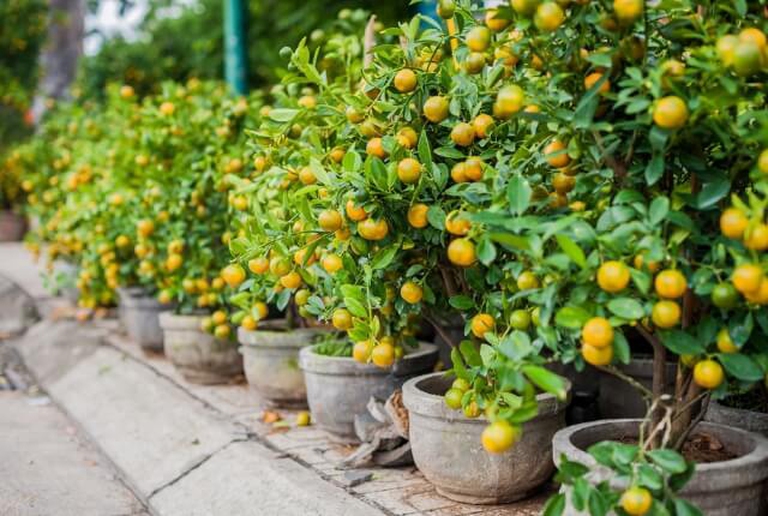
Maybe it was the cedar to arrive first, in classical antiquity, when the Romans called it Pomo di Persia.It was then the Arabs who brought lemon And bitter orange in the Mediterranean basin, around the 10th century.The Portuguese instead imported thesweet orange in the 16th century.For the mandarin however, we had to wait until the beginning of the 19th century.Now citrus fruits are grown practically all over the world in areas with a temperate or subtropical climate.
Characteristics of citrus fruits
THE citrus that is, as we were saying, citrus fruits belong to the family of Rutaceae.They are evergreen plants, except citrus trifoliata (a very cold-resistant orange with slightly hairy fruit peel) with fragrant flowers.Their fruits, The citrus fruits that we commonly consume, are classified as hesperides, that is, fleshy fruits, similar to the modification of a berry consisting of pulp (endocarp) acidic, juicy and divided into segments, albedo (mesocarp), the bitter and spongy white part, e peel (pericarp) resistant, thick and rich in essential oils.They have more or less sour flavour and have different characteristics according to species and varieties.The semi-transparent juicy pulp divided into segments is wrapped in a thin film.
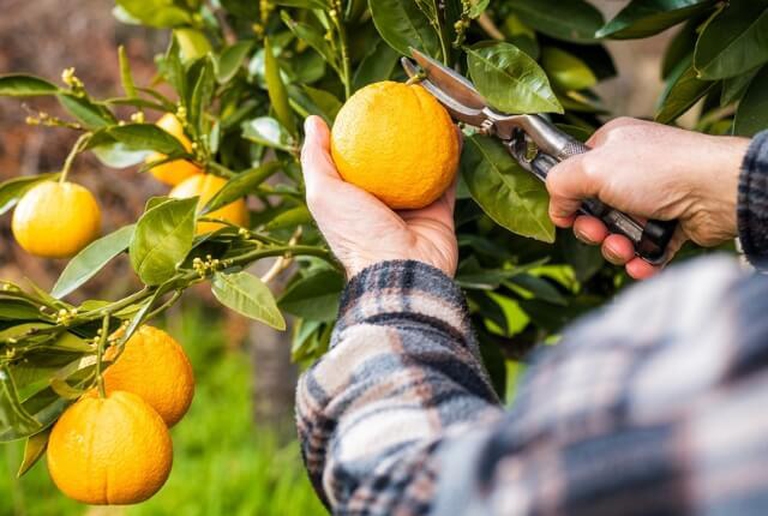
The ripening period extends from mid-December to the end of May, but some varieties, such as green lemons they are also summery.They are mainly consumed fresh and raw but are also present in many preparations prepared in the kitchen.A'virtuous initiative which winks at sustainability andcircular economy proposes the creation of yarns and fabrics obtained from citrus pulp, a by-product of the squeezing industry, with the aim of making the world of fashion more sustainable.
Types and varieties
Each of the sixty species of citrus, ha many varieties crops each, including many hybrids with different characteristics.They are divided into two main species:type trifoliate (citrus trifoliata) and type unifoliate, which includes all the others (orange, bergamot, cedar, chinotto, lemon, mandarin, grapefruit and lime).
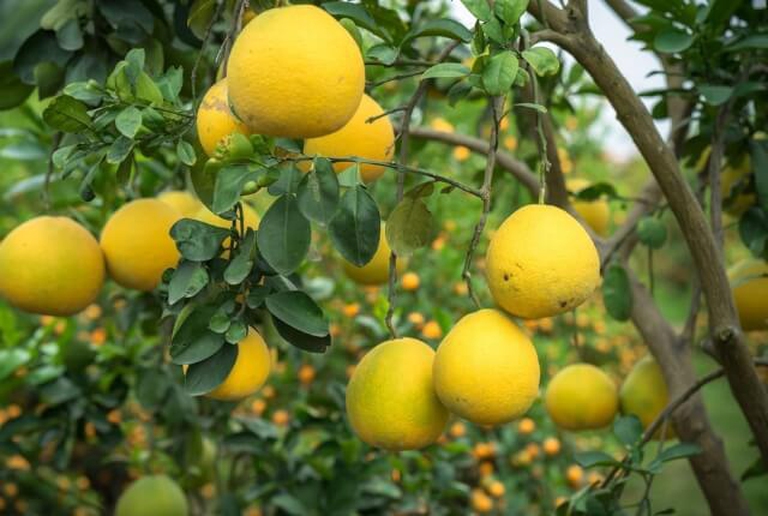
Almost all known species are the result of hybridizations that have maintained their initial properties, except mandarin, cedar And pomelo.The latter are in fact considered the original citrus fruits, or “ancestral species” (coming from China, India and South-East Asia) from which all natural hybrids were born.The teacher Alessandra Gentile, of the Department of Agriculture, Food and Environment of the University of Catania, states that "studies of genetic similarity between citrus species have made it possible to identify in the cedar (citrus medica), in the mandarin (citrus reticulata) and in the pummelo (citrus maxima ) the progenitors of the other citrus species – for this reason they are often defined as true species – from which most of the other species originated through subsequent crossings”.
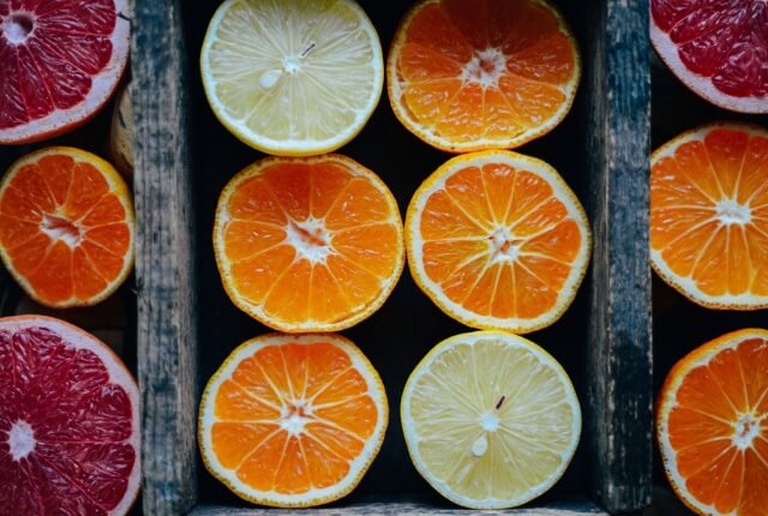
Among the infinite derived varieties, here are the main ones:
- Mandarin: citrus reticulata.Among the three original citrus fruits, the mandarin it is native to China.It has small fruits, thin, orange-coloured skin, rich in essential oils and a sweet aromatic flavour.Among his descendants tangerine And clementines but also iyokan, dekopon and komikan e satsuma.The latter are Japanese and Chinese mandarins with a yellow-green colour, seedless, orange pulp and a slightly sour taste.
- Pomelo:citrus maxima.Large in size, it can even reach 2 kilos in weight.The pomelo is an original citrus fruit, it comes from South-East Asia.Grapefruit is derived from it.With a smooth skin and pale yellow colour, its taste is bitter and then tends towards sweet when ripe.
- Cedar:cmedical itrus. It is the third original citrus fruit.Coming from India, the cedar it is oval in shape.The taste is acidic and the peel, thick and wrinkled (but not always), is generous with aromatic essential oils.The pulp, however, is scarce, especially in the case of cedar hand of Buddha (citrus medica var.sarcodactylis) divided into elongated ends or branches (just like fingers), practically without pulp and juice.It is mainly used in cosmetics, medicine and as a votive offering in Buddhist temples.
- Orange.It derives from the union between pomelo and mandarin. Citrus sinensis it is the sweet orange;citrus auratium it is the bitter orange.The varieties are endless.Every part of it is consumed, even the flowers for the essential oil.The peel is smooth, orange tending towards red, the pulp is juicy and sweet.The oranges poncirus trifoliata they have a bitter taste, used in traditional Chinese medicine.
- Lemon:citrus lemon.It is a probable ancient hybrid of cedar and bitter orange, apparently born in India and now widespread in our southern regions.The bright yellow peel is smooth, rich in essential oils, the taste is distinctly acidic.
- Grapefruit:citrus x paradises.It is a cross between pomelo and sweet orange.Rather large in size (around 10-15 cm in diameter), it has a smooth pinkish-yellow skin like the pulp which also reaches red when it is sweeter, but always characterized by a bitter aftertaste.Because of furanocoumarins, some organic substances it contains, grapefruit could interact with medications therefore it is best not to exceed in consumption and, if necessary, consult a doctor.
- Lime: citrus latifolia.Also called lime, it is a hybrid between lemon and key lime originating from Persia (now Iran and Iraq).The peel is green, it is seedless and less acidic than other citrus fruits.There are different varieties with even more bitter flavors.Among these the kaffir lime or the finger limes.The first, a hybrid between citron and lime, with wrinkled skin and a fig shape, is extremely sour so its particularly aromatic zest and leaves are used.The finger lime (citrus Australasica) instead is of Australian origin.It's a Microcitrus, very small in size.Its pulp is made up of small spheres with an acidic taste.
- Bergamot: citrus bergamia.It is a hybrid between lemon and bitter orange.Perhaps originally from China, it is now cultivated mainly in Calabria.Slightly elongated pear-shaped, the skin is wrinkled or smooth and the taste is bitter.Its uses are mainly linked to cosmetics due to its very aromatic essential oil but it is also becoming increasingly present in the kitchen.
- Chinotto: citrus myrtifolia.It is a variety of bitter orange grown mainly in Western Liguria, in the province of Savona.Citrus fruit without thorns with small orange fruits slightly flattened at the poles.Its flavor is acidic and bitter, so it is consumed only after processing.
- Mapo: citrus x angel.A hybrid between mandarin and pomelo.The pulp is sweet and juicy, the pear shape has a protruding "navel" and yellow color.
- Kumquats (or Chinese Mandarin): citrus japonica.It is a small category in itself.It is eaten whole in one bite, including the peel.The taste is slightly bitter, the peel orange and sweet and sour.
- Yuzu: citrus junos.It is a hybrid between Ichang lemon (China) and mandarin.It looks like a small grapefruit, slightly flattened at the poles and very aromatic green-yellow peel, like the juice.It is used in Japanese cuisine for the unmistakable flavor it gives to culinary preparations.
The health benefits of citrus fruits
Citrus fruits have characteristics that unite them.Their rinds are generous with beta-carotene And aromatic substances stimulants, involved in the processes of neutralization of carcinogens by the body.In addition to aromatic terpenes (a compound present above all in aromatic oils which determine their fragrance) there is an excellent quantity ofwaterfall and the energy intake is different depending on the variety.Thanks to the rich presence of flavonoids (antioxidants that repair cellular damage), according to research from the University of Tohoku, Japan, published in the journal British journal of nutrition, daily consumption of citrus fruits would reduce the risk of dementia by 15 percent in elderly people over sixty-five.
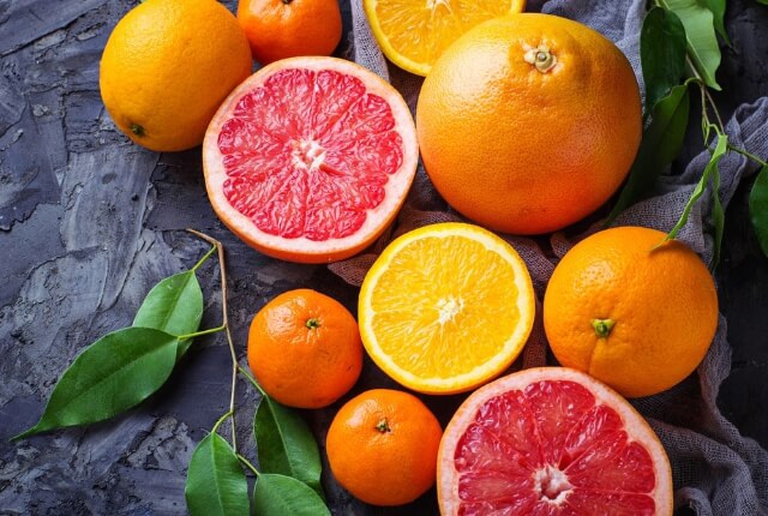
Citrus fruits are equipped with mineral salts, including the potassium.The presence of ascorbic acid is also very important vitamin C, a valid ally in fighting the cooling disorders typical of the winter period, the main citrus fruit season.Then the vitamins A and of group B, soccer And phosphorus, even more so in mandarin than in orange.Lemons, oranges, grapefruits and limes are also rich in protopectin, or pectin, a soluble fibre, natural thickener especially useful for the preparation of jams and marmalades.They are among the foods that contain the greatest quantity.For this reason they help increase the sense of satiety, slow down digestion, regulate the intestine and tend to help reduce cholesterol.THE'citric acid, present especially in lemons, helps prevent kidney stones.As we were saying, the consumption of grapefruit may interact with some medications therefore if you take medicines it is better to consult a doctor's opinion.
Tips for purchasing and storing
When buying citrus fruits always observe with pay attention to the peel which must be smooth, free of dents, soft parts or stains and of a nice bright colour.The perfume it must make itself felt with its characteristic citrus, sparkling and sweet notes.
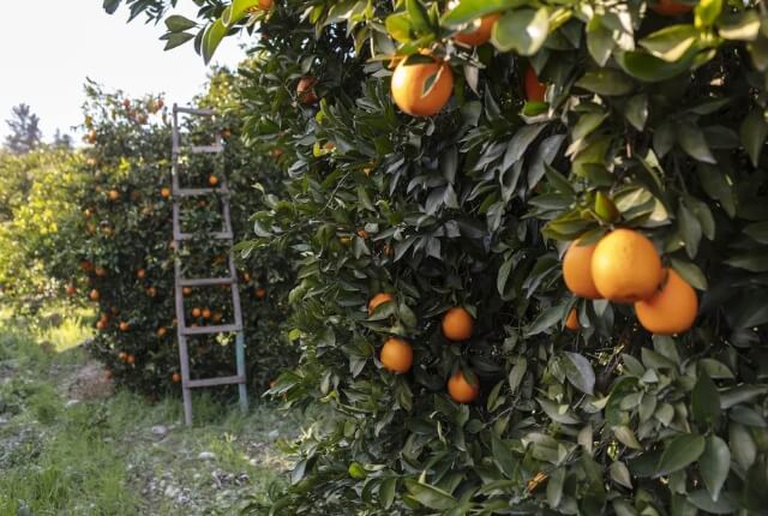
Fresh citrus fruits can be preserved then at room temperature for approx a week, but always in a dry and cool place, away from direct light and allowing air to circulate between the fruits, avoiding crowding them to reduce the possibility of bruising them.In winter you can also store them outside, in a sheltered place.
Culinary uses
To take advantage of all the organoleptic properties of citrus fruits it is best to consume them raw And very fresh, freshly peeled, to preserve their perfumes, aromas and the famous vitamin C.The segments can be tasted "naked and raw" or squeezed for delicious juices to be consumed at breakfast (better preceded by a nice glass of water to counteract the acidity) and during the day (better to avoid in the evening to avoid the possibility of weighing down the digestion).
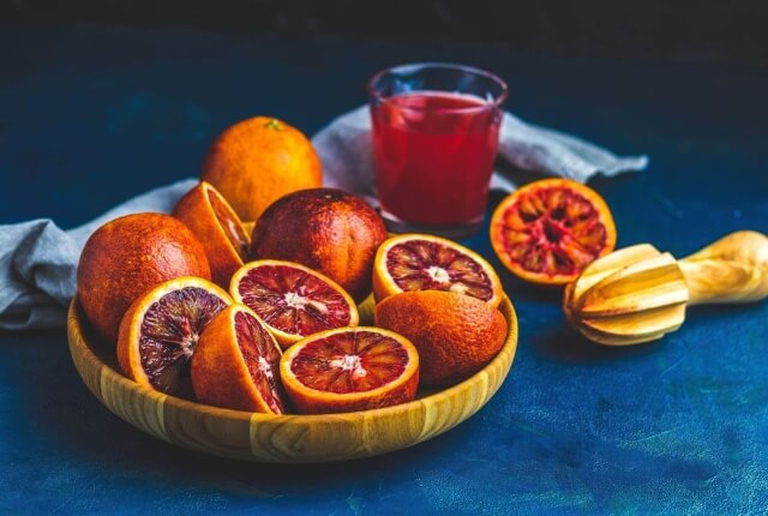
THE juices and the pulp they are then used to flavor numerous meat and fish dishes, salads but also risottos and, above all, desserts.Even the zest, very aromatic, in the kitchen it perfumes both sweet and savory preparations.If you don't have fresh fruit, you can also use their own essential oils.As always, they must be added delicately, just a few drops with the heat off to avoid sending perfumes and properties up in smoke.
Representative recipes
Among the recipes that we love to remember in which citrus fruits are the protagonists, how can we not think of them? salads, the classic one of oranges, fennel and olives, for example, to be combined perhaps with walnuts and parmesan or with radicchio, grapefruit and apples.
A splash of lemon juice softens the fillets fish, it smells i cookies and the risotto with parmesan.Orange juice, but also zest, loves meat and vegetables instead.
Then there are the desserts.The jams first of all:they are citrus jams, the only ones that take the name of "marmalade" (according to European directive n.79/693 of 1979 then included in Presidential Decree n.401 of 8 June 1982 in which the European Community defines marmalade as a citrus fruit base, with a minimum of 20 percent of their pulp, juice or peel).

Then the cakes, with lemon or with orange and dark chocolate, the same melted chocolate dripping onto the peels of orange to entice them.Still, drinks And drinks also alcoholic such as punch (of Anglo-Saxon origin) and Aosta Valley grolla to warm the belly in the winter cold.What can I say, an endless world in which to harmonize intense flavors with the aromas and sweet citrus acidity of these fruits that never cease to amaze.
Citrus fruits in brief
- What is meant by citrus fruits? Citrus fruits are cultivated plants belonging to the Citrus genus, derived mainly from hybridizations, whose fruits of the same name have been consumed on our tables for millennia.
- What are all the types of citrus fruits? Among the infinite varieties of citrus fruits, here are some:mandarins, pomelos, citrons, oranges, lemons, grapefruits, limes, bergamots, chinotti, mapo, kumquats and yuzu.
- What are the three original citrus fruits? The ancestral or original species are mandarin, pomelo and citron, from China, Southeast Asia and India.
- What is the first citrus fruit? Among the original citrus fruits, it seems that the cedar is absolutely the first, already known to the ancient Romans and probably coming from India.
- What are citrus fruits good for? Due to the presence of vitamin C, mineral salts and pectin, citrus fruits increase immune defenses and help reduce the feeling of satiety and cholesterol.Thanks to the rich presence of flavonoids, the daily consumption of citrus fruits would reduce the risk of dementia by 15 percent in elderly people over sixty-five.
- What are the most popular citrus fruits in Italy? Oranges, clementines and lemons are among the most widespread and cultivated citrus fruit varieties in Italy.But there are also important productions of bergamots, grapefruits and cedars.
- What are summer citrus fruits? Among the citrus fruits that can be found in summer there are some varieties of late oranges (cultivated until June), such as the Valencia Late, and some lemons, such as the verdello, the third flowering of the Sicilian Femminello.
- What are the most cold-resistant citrus fruits? Citrus trifoliata, a very cold-resistant orange with slightly hairy fruit skin and fragrant flowers.
